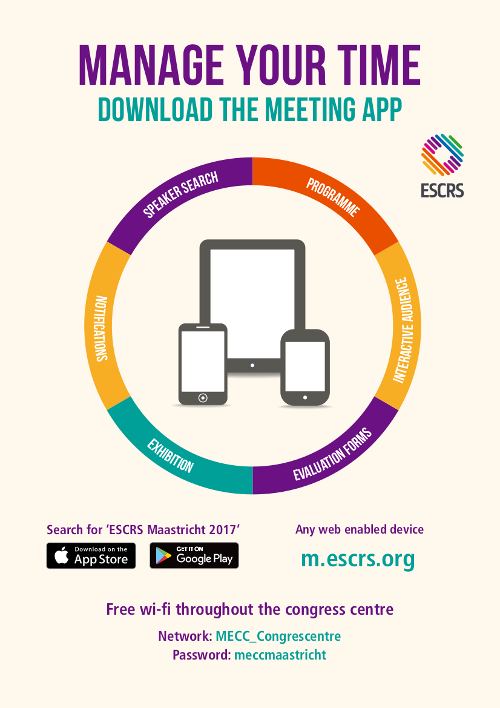Posters
(results will display both Free Papers & Poster)
Intense pulsed light treatment for dry eye disease and change in osmolarity
Poster Details
First Author: F. Carones ITALY
Co Author(s): L. Vigo E. Mertens
Abstract Details
Purpose:
Chronic meibomian gland dysfunction (MGD) results in increased tear evaporation and abnormal tear osmolarity leading to ocular discomfort and dry eye disease (DED). Intense pulsed light (IPL) treatment has been shown to improve signs and symptoms of evaporative DED associated with MGD. The objective of the study is to assess changes in tear osmolarity with IPL treatment.
Setting:
Carones Ophthalmology Center, Milan, Italy; Medipolis, Antwerp, Belgium
Methods:
A retrospective interventional case series was conducted with 12 patients (24 eyes) presenting with DED associated with MGD. IPL therapy (E-Swin, Paris, France) uses regulated flash technology to deliver constant luminous power to allow optimal spacing and energy to stimulate the meibomian glands and regain normal function. IPL therapy typically involves treatment across 4 sessions: day 0, 14, 45, and 75. Tear osmolarity was measured at baseline and at day 75 (Tearlab, San Diego,USA). Data was analyzed to report changes in tear osmolarity pre- and post-IPL therapy.
Results:
Mean age was 64.8 ± 12.2 years and included 7 females and 5 males. One wore contact lenses, 2 had prior refractive surgery, and 6 patients were pseudophakic. Mean tear osmolarity at baseline was 312.0 ± 16.8 mOsm/L with inter eye difference of 10.1 ± 9.4 mOsm/L. At day 75, there was significant reduction in tear osmolarity (mean: 299.9 ± 4.9 mOsm/L, p < .0001) and inter eye difference of 6.9 ± 4.1 mOsm/L, p = .008. Reduction in tear osmolarity was significantly correlated to baseline tear osmolarity (r2 = 0.84, p = .0006) indicating effective reduction in DED severity.
Conclusions:
Significant reduction in tear osmolarity was measured following IPL therapy. Tear osmolarity provides objective and quantitative tracking of therapeutic efficacy of IPL therapy for treatment of DED with MGD. Additional studies on larger sample size may be required to understand changes, following IPL therapy, in osmolarity and other DED signs in patients with different severity levels of MGD.
Financial Disclosure:
receives consulting fees, retainer, or contract payments from a company producing, developing or supplying the product or procedure presented, travel has been funded, fully or partially, by a company producing, developing or supplying the product or procedure presented, receives nonNonemonetary benefits from a company producing, developing or supplying the product or procedure presented.



